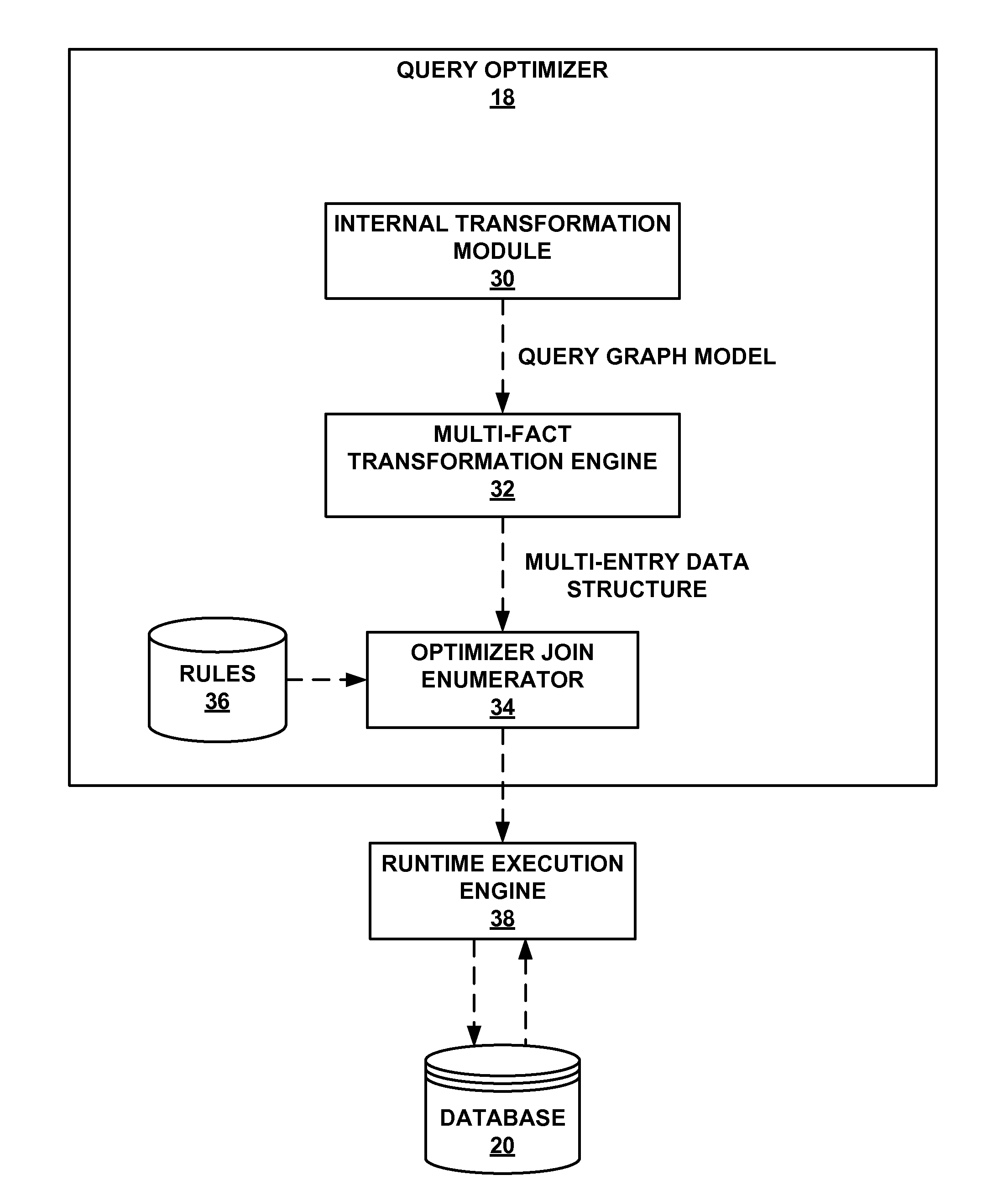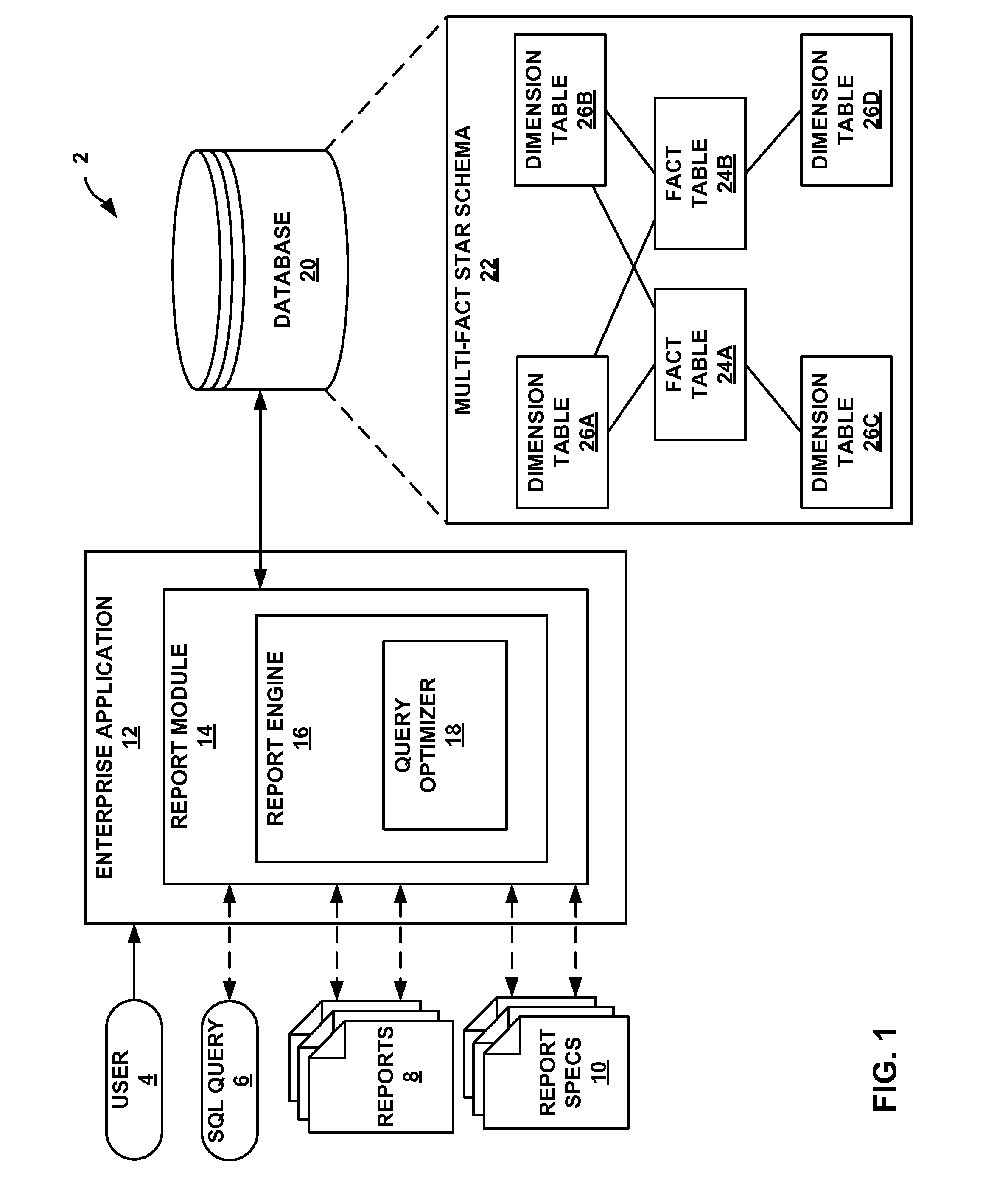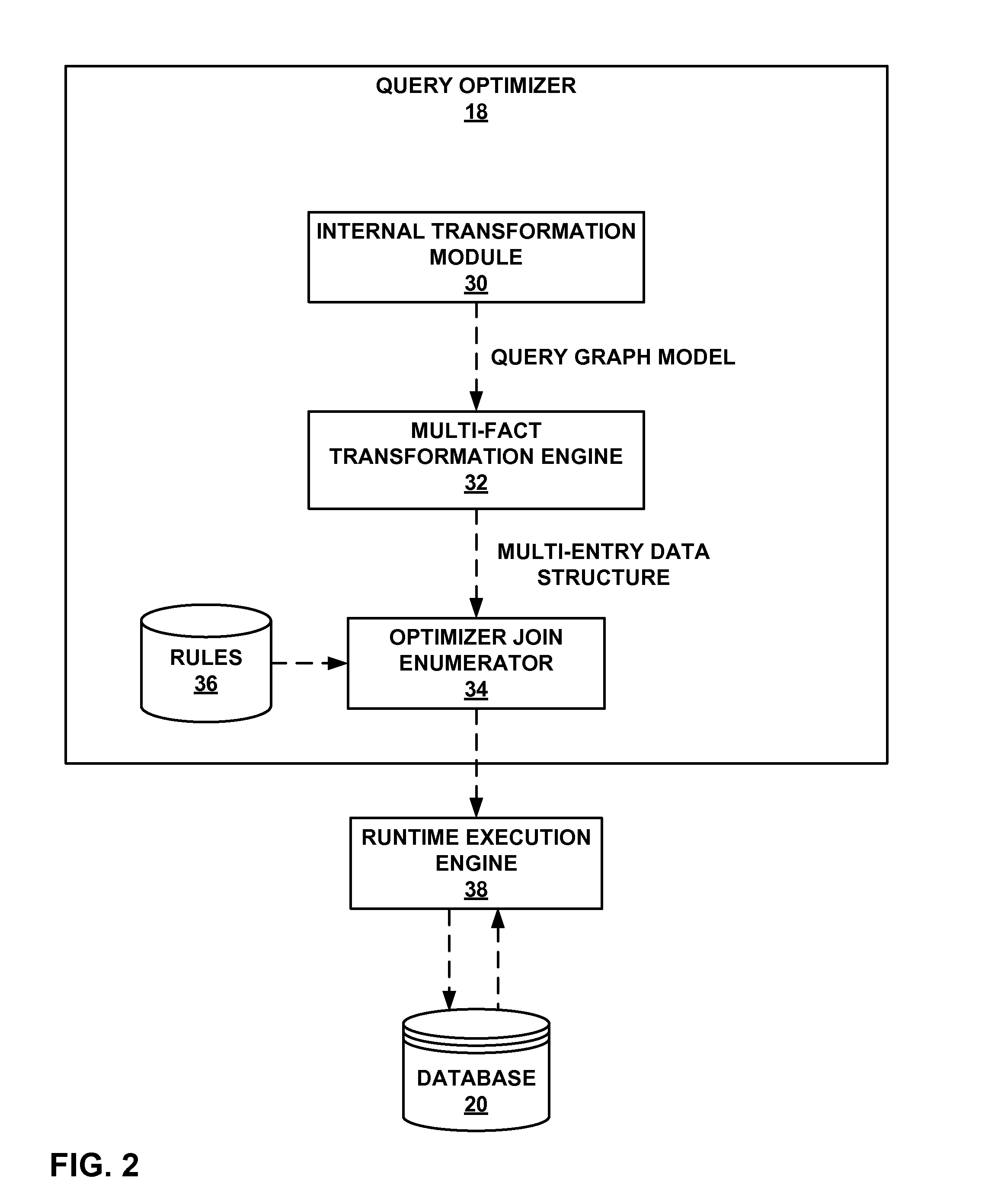Multi-fact query processing in data processing system
a data processing system and multi-fact query technology, applied in the field of software systems, can solve the problems of long response time and large amount of database systems that require database systems to operate over large amounts
- Summary
- Abstract
- Description
- Claims
- Application Information
AI Technical Summary
Benefits of technology
Problems solved by technology
Method used
Image
Examples
Embodiment Construction
[0014]To improve efficiency and reduce response times, some database systems perform optimizations to process star schema queries. However, when processing queries that reference multiple fact tables of a star or snowflake schema (i.e., multi-fact queries), conventional techniques may constrain or over-simplify the optimization operations. For example, certain conventional techniques require the creation of composite indexes on each of the fact tables that include columns in the same relative order. Such techniques may require the composite indexes to be maintained as the information in the fact tables increases, decreases, or otherwise changes. As another example, certain conventional techniques treat all but one fact table as dimension tables. However, such a simplification may result in less than optimal performance with respect to multi-fact queries. Moreover, conventional techniques typically use a common dimension table to filter only one fact table. As such, other fact tables...
PUM
 Login to View More
Login to View More Abstract
Description
Claims
Application Information
 Login to View More
Login to View More - R&D
- Intellectual Property
- Life Sciences
- Materials
- Tech Scout
- Unparalleled Data Quality
- Higher Quality Content
- 60% Fewer Hallucinations
Browse by: Latest US Patents, China's latest patents, Technical Efficacy Thesaurus, Application Domain, Technology Topic, Popular Technical Reports.
© 2025 PatSnap. All rights reserved.Legal|Privacy policy|Modern Slavery Act Transparency Statement|Sitemap|About US| Contact US: help@patsnap.com



